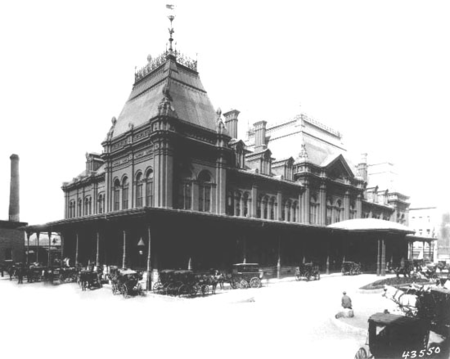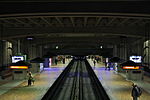Bonaventure Station (1887–1952)
Buildings and structures demolished in 1952Burned buildings and structures in CanadaDemolished buildings and structures in MontrealGrand Trunk Railway stations in QuebecHistory of Montreal ... and 4 more
Railway stations closed in 1948Railway stations in Canada opened in 1847Railway stations in MontrealRomanesque Revival architecture in Canada

Bonaventure Station was the name of a railway station located in Montreal, Quebec, Canada. Its name was later adopted by a commercial development and a metro station.
Excerpt from the Wikipedia article Bonaventure Station (1887–1952) (License: CC BY-SA 3.0, Authors, Images).Bonaventure Station (1887–1952)
Rue Saint-Jacques, Montreal Ville-Marie
Geographical coordinates (GPS) Address Nearby Places Show on map
Geographical coordinates (GPS)
| Latitude | Longitude |
|---|---|
| N 45.4964 ° | E -73.5647 ° |
Address
Rue Saint-Jacques 1021
H3B 4W5 Montreal, Ville-Marie
Quebec, Canada
Open on Google Maps








